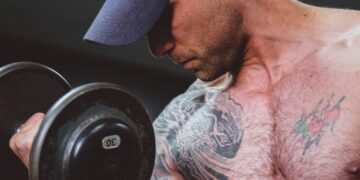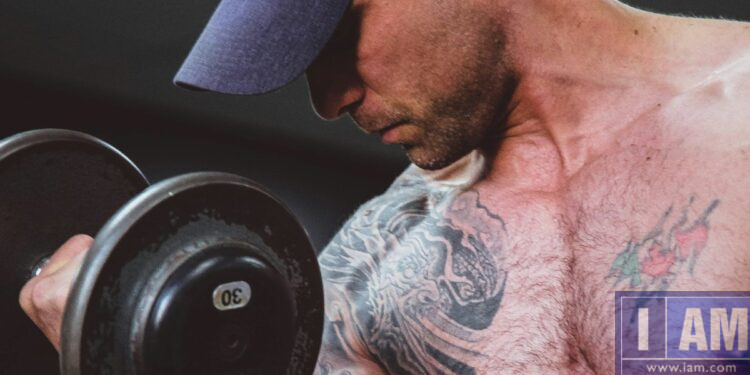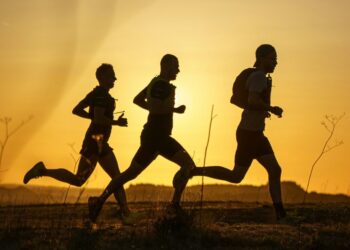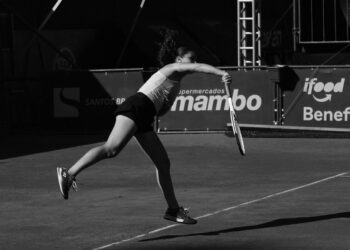The question isn’t just “when” to start weight training for the young student athlete but it is also about “where” and “how.” While sports science has clear guidelines about age-appropriate strength training, the reality of youth weight training, especially in public school settings, requires parents to consider safety factors that often go unaddressed.
The Science-Based Timeline
Research shows that kids can start structured strength training around 7 or 8 years old if they can follow instructions and demonstrate emotional maturity. Please check and verify this first. But “strength training” for elementary athletes doesn’t mean loading barbells. Before puberty, young athletes should focus their personal strength training on bodyweight exercises. At this beginning, early age you could instruct a child on the proper use of resistance bands and of lightweight dumbbells. Here, the goal would not really be to build muscle mass because that will mostly require hormones that have not kicked into their small body yet. But here, at this beginning stage, we can develop movement patterns, develop coordination, and develop foundational strength. All of these will be used to build a foundation for their later weight training technique. I believe that this is very useful for their successful future in weight training.
Middle school students (ages 11-14) – This is a transitional period for young athletes’ bodies. Athletes can start learning proper form with empty barbells and light weights to begin with. The emphasis is on technique. Then, engage in weight training routines under load with 12-15 repetitions per set to build muscular endurance and to reinforce the proper movement patterns. This is when many schools introduce weight room access. It is also when parents need to be the most vigilant.
High school athletes (14-18) – These student-athletes can do progressive resistance training including heavier loads and with more complex movements. Post puberty with growth hormones very active, teens can build actual muscle mass and increase their own strength. But increased capability does not automatically mean increased safety.
The Hidden Danger: School Weight Room Reality
Here’s what athletic departments rarely discuss: most public school weight rooms are fundamentally unsafe environments, in my opinion, for learning proper lifting technique. As a former public school teacher who still deals with neck issues from a weight room accident at 57, I can attest that these spaces often prioritize cramming equipment into a small room over safety design. Compound this problem with 2 factors: 1) a short amount of time to quickly get a lot of work in, the class time minus time to dress out and get dressed again; and 2) too many students in the same small space at the exact same time.
Unless your child attends a state championship-caliber school with dedicated athletic funding, their weight room is likely a converted classroom or auxiliary space crammed with donated equipment. Unlike basketball courts or football fields with standardized dimensions, weight rooms have no mandatory spatial guidelines. I’ve seen coaches send entire PE classes of 30+ students into rooms designed for maybe 15 people maximum. My own cautionary tale occurred in middle school during a bench press session. I was spotting a friend and bent to pick up a small weight plate. The squat rack, positioned inches away due to space constraints, was occupied by another student who dropped a 45-pound plate directly onto my head and neck. Decades later I still feel crunching sensations when I rotate my head. This wasn’t a freak accident. This was a completely predictable altercation in an overcrowded and poorly designed space for its function. And, this is not even addressing what proper supervision would have looked like.
Safer Alternatives
Before you let your young athlete into a school weight room, do your own assessment. Visit during a typical training time. Can students maintain three feet of clearance around equipment? Are Olympic lifts being performed near other stations? Is supervision adequate? This means is one qualified adult per 10 to 12 students, or a better supervision ratio, not one coach for 30 under-qualified, under-skilled, beginner students?
If the school facility looks unsafe, consider that there are alternatives:
- Private training facilities have better equipment spacing and lower athlete-to-coach ratios
- Home training with adjustable dumbbells, resistance bands, and bodyweight exercises can be highly effective through middle and high school
- Community recreation centers have better safety standards than many schools
- Sport-specific training programs provide structured, supervised environments
Progressive Training Guidelines by Age
Ages 7-10: Bodyweight exercises – these include exercises like push-ups, planks, and body weight squats; light resistance bands; medicine balls. Focus on fun with movement quality, 2-3 sessions weekly.
Ages 11-13: Dumbbell exercises; empty barbell technique work; structured bodyweight progressive exercises; 12-15 repetitions, 2-3 sessions weekly, don’t ever train to failure.
Ages 14-18: Progressive barbell training; periodized programs; combine these with sport-specific power development. 3-4 times weekly with varied intensities, but only in properly supervised weight training environments.
Non-Negotiable Safety Standards
Regardless of age or location, insist on these minimums:
- Qualified supervision (a certified strength coach or a trained adult)
- Proper equipment spacing (arm’s length plus the equipment range of motion)
- Maximum occupancy limits per room (posted and enforced)
- Mandatory technique instruction before any load progression
- Written and posted emergency procedures
- Equipment maintenance logs
The Gift of Proper Training
Despite my own weight room accident, I want to stress this: proper strength training is one of the best gifts you can give your child. At 57, I still go to the gym regularly. I have found the best gym facility in my town where safety and proper spacing are a priority. My fitness journey first began at my childhood home. My dad taught me how to lift weights, with both free weights and machine weights. I learned the basics with adult supervision in a controlled environment. Today, I do regular cardio and weight training sessions. Over the years, I have found that this is not only just for my physical health. The regular sessions have been essential for my mental and emotional wellbeing and stability as well. This relationship with fitness has lasted me decades. And, it continues.
This is why getting it right is so important. When young athletes learn to train safely and effectively they’re not just building their strength for this sports season or next season. Young athletes could be developing positive habits that will last a lifetime. The confidence, the discipline, along with their resilience can be developed and built upon through the proper training and technique that extends far beyond just sports. But, when we expose them to dangerous conditions in overcrowded school weight rooms we risk not just immediate injury but potentially turning them off of fitness altogether.
The Bottom Line
Weight training can be great for young athletes when it is done correctly. But don’t assume school programs will fill in for you. And, don’t just assume that someone else will automatically provide safe environments. This is on you. Take responsibility. Visit every facility. Ask tough questions. Do not hesitate to seek alternatives if safety standards aren’t met or you have other concerns. Your child’s long term health matters more than your convenience or your student athlete’s team pressure.
A well designed strength program builds resilient athletes. A poorly supervised, overcrowded weight room creates lifetime injuries. Parents must advocate for the former and protect against the latter.


















